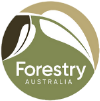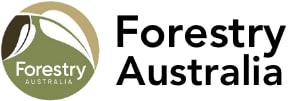
Opinion Piece: Forests; future at stake: Reducing Bushfire Risks in Victoria’s forests
This Opinion Piece appeared in The Weekly Times on 2 August 2023
The evidence is very clear that Victoria has been experiencing more frequent and more intense bushfires over the past 20 years and that repeated severe bushfires are having very significant impacts on both communities and a wide range of forest values.
It is wrong, as some academics claim, that State forest policies, related to timber harvesting and removing fallen trees after windstorms, are making Victoria’s forests more flammable.
While individual research articles may suggest there is a link between timber harvesting and subsequent bushfire risk, this assertion is not borne out by either observed outcomes at the landscape scale or the underlying science on bushfire behaviour.
Over a period of three months, Victoria’s 2019-20 Black Summer bushfires burnt 1.5 million hectares, of which 88% was public land designated as State forest or National Park.
The independent Major Event Review of the impacts of these bushfires on Victoria’s Regional Forest Agreements found that National Parks only made up 36% of the public land burnt but accounted for 47% of the public land that was burnt at high severity.
In contrast, the areas of State forest where limited timber harvesting was allowed made up 49% of the public land burnt and accounted for 49% of the public land that was burnt at high severity.
Considering this landscape-level evidence, the harvesting of timber in State forest has not made the forests more flammable than areas of National Park.
When bushfires burn large areas of forest over extended time periods, different parts of the forest burn at different levels of fire severity, depending on a wide range of factors.
In general, bushfires burn more severely when burning uphill compared to downhill, at the head of the fire compared to the flanks or rear of the fire and during the day compared to at night.
Fire severity is also directly corelated to both available fuel levels and to the prevailing weather, which varies considerably from day to day and within any single day.
When using post-fire satellite imagery to determine bushfire severity classes, shorter forest types will always appear to have been burnt more severely than taller forest types, because their tree canopies are more likely to be directly impacted by flames at any given fire intensity.
At a local scale, recently harvested areas of forest have shorter trees compared to adjacent forests and therefore are more likely to appear to be severely burnt.
The same outcome occurs in conservation reserves when short regrowth trees originating from a previous bushfire are burnt.
Therefore, bushfire science does not support the contention that timber harvesting causes forests to become more flammable or that ceasing timber harvesting will reduce the risk of forests being burnt at high severity.
Claims that implementing prescribed burning to reduce fuel hazards in distant and remote places creates more flammable forests does not match the findings of recent published research on the effectiveness of prescribed burning or the lived experience in most of the forests of south-eastern Australia.
Victorians need to understand that intense and more frequent large bushfires are are causing great harm to Victoria’s forests and their dependent biodiversity and that these undesirable impacts will continue unless there is more active management of forests.
Since 2000, Victoria has lost about 60% of its old growth forests from them being burnt by high severity bushfire – that is equivalent to losing an area four-times the size of Wilson’s Promontory National Park.
What a catastrophe, which is not being openly discussed.
Equally concerning is the impact that high severity bushfires are having on threatened species such gliders and large owls.
Victorian research after the 2019-20 bushfires has found that known populations of these threatened species significantly declined in forests that burnt at high severity, whereas they were more resilient in forests burnt at low or medium severity.
It is very clear that the long-term stability of Victorian forest ecosystems is under threat from intense bushfires and that current forest land management strategies are not achieving the desired conservation outcomes.
More thought needs to be given to identifying appropriate active management strategies and then strategically implementing these activities across the entire forest landscape.
Well planned and carefully implemented prescribed burning is one of the most effective active management options that can be implemented to reduce the impacts of high severity bushfires and improve the resilience of forest ecosystems.
In doing so, forest land managers need to empower Traditional Owners to implement cultural burning and also adapt these cultural land management principles into their prescribed burning programs.
As the Major Event Review has recommended, there needs to be much better integration of the forest management plans, National Park management plans and bushfire management strategies to address the very substantial bushfire challenges that are impacting so significantly on Victoria’s forests.
Dr. Tony Bartlett is a bushfire expert and science policy advisor with Forestry Australia.

